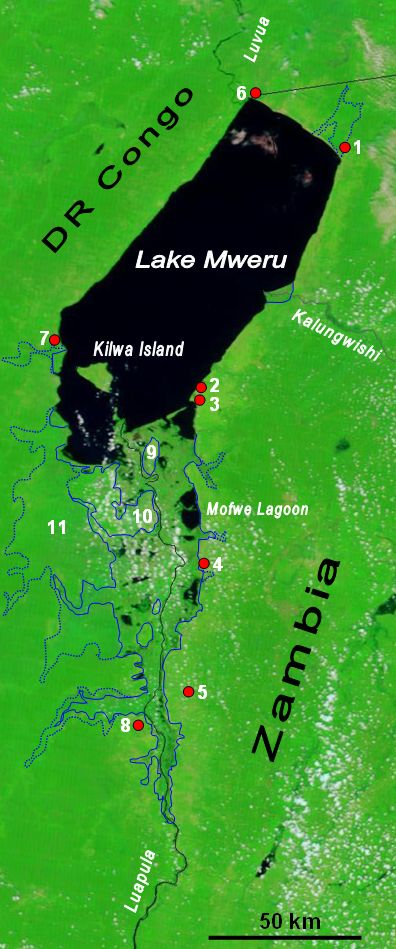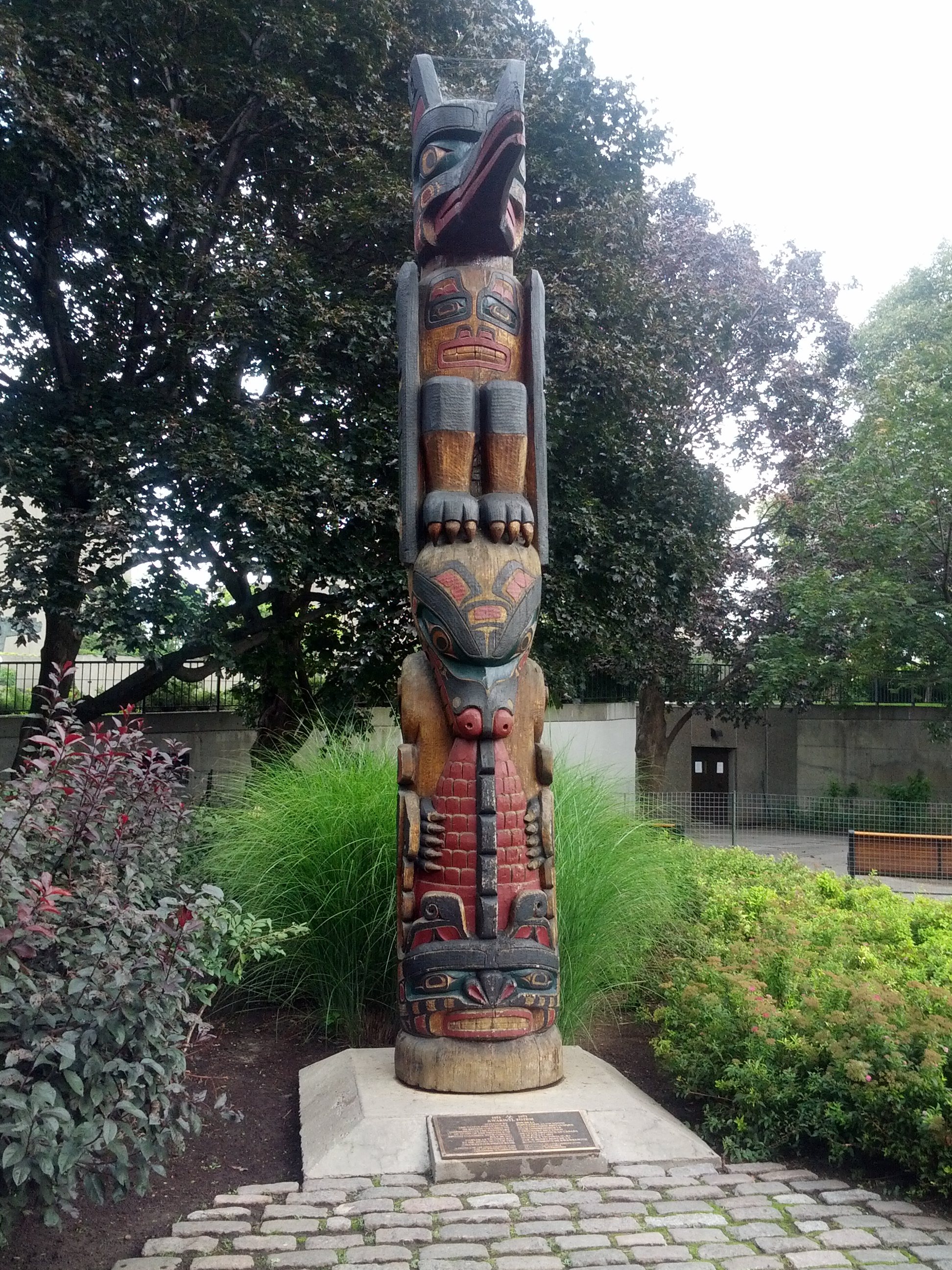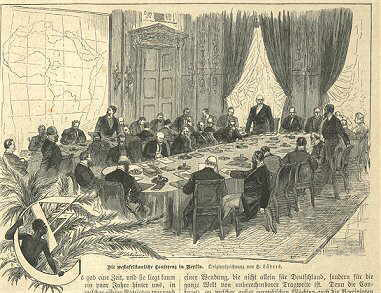|
Bemba People
The Bemba belong to a large group of Bantu peoples, primarily in the Northern Province, Zambia, Northern, Luapula Province, Luapula, Muchinga Province, Muchinga and the northern Central Province, Zambia, Central Province of Zambia. The Bemba entered Zambia before 1740 by crossing the Luapula River from Kola. Several other ethnic groups in the northern and Luapula regions of Zambia speak languages which are similar to Bemba language, Bemba, but have different origins. The Bemba people are not indigenous to Copperbelt Province; they arrived there during the 1930s due to employment opportunities in copper mining. Living in villages of 100 to 200 people, they numbered 250,000 in 1963. The ethnicities known today as the Bemba have a ruling clan known as ''Abena Ng'andu''. The traditional ruler of ethnic Bemba is Chitimukulu. The Bemba are one of the larger ethnic groups in Zambia, and their history illustrates the development of chieftainship in a large and culturally-homogeneous re ... [...More Info...] [...Related Items...] OR: [Wikipedia] [Google] [Baidu] |
Joshua Project
The Joshua Project is an Evangelicalism, evangelical Christian organization based in Colorado Springs, Colorado, Colorado Springs, United States, which seeks to coordinate the work of Christian_mission#Contemporary_concepts_of_mission, missionary organizations to track the ethnic groups of the world with the fewest followers of evangelical Christianity. To do so, it maintains ethnologic data to support Christian missions. It also tracks the evangelism efforts among 17,351 people groups worldwide—a people group being "the largest group within which the Gospel can spread as a church planting movement," according to the project's website—to identify people groups as of yet unreached by Christian evangelism. History The project began in 1995 within the former AD2000 and Beyond Movement, which itself sprang from the 1989 Global Consultation on World Evangelization (GCOWE) prior to the Second International Congress on World Evangelization. From 2001 through 2005 the Joshua Project w ... [...More Info...] [...Related Items...] OR: [Wikipedia] [Google] [Baidu] |
Nguni People
The Nguni people are an ethnolinguistic group of Bantu peoples, Bantu ethnic groups native to Southern Africa where they form the single largest ethnolinguistic community. Predecessors of Nguni people migrated from Central Africa into Southern Africa during the late Iron Age, with offshoots in neighboring colonially-created countries in Southern Africa. Swazi people, Swazi (or Swati) people live in both South Africa and Eswatini, while Ndebele people live in both Ndebele people (South Africa), South Africa and Ndebele people (Zimbabwe), Zimbabwe. The Xhosa people, Xhosa, local to the Eastern Cape, established tribal sub-federations—the Gcaleka, Rharhabe, and Gqunukhwebe—in the 16th century. The homeland of the Xhosa people is marked by lands in the Eastern Cape from the Gamtoos River up to Umzimkhulu near Natal, bordered by the frontier of an expanding Dutch Cape Colony. Both the Matabele people, Matabele of Western Zimbabwe and the Ngoni people, Ngoni migrated northward out ... [...More Info...] [...Related Items...] OR: [Wikipedia] [Google] [Baidu] |
Ipunga
Ipunga is a ward in the Mbozi District of Songwe Region, Tanzania Tanzania, officially the United Republic of Tanzania, is a country in East Africa within the African Great Lakes region. It is bordered by Uganda to the northwest; Kenya to the northeast; the Indian Ocean to the east; Mozambique and Malawi to t .... Its postal code is 53316. In 2016 the Tanzania National Bureau of Statistics report there were 10,657 people in the ward, from 9,367 in 2012. References Wards of Songwe Region {{Songwe-geo-stub ... [...More Info...] [...Related Items...] OR: [Wikipedia] [Google] [Baidu] |
Chambeshi River
The Chambeshi (or Chambezi) River of northeastern Zambia is the most remote headstream of the Congo River (in length) and therefore it is considered the source of the Congo River. (However, by volume of water, the Lualaba River provides a greater streamflow to the Congo.) The Chambeshi rises as a stream in the mountains of northeast Zambia near Lake Tanganyika at an elevation of above sea level. It flows for 480 km into the Bangweulu Wetlands, which are part of Lake Bangweulu. By the end of the rainy season in May, the river delivers a flood which recharges the wetlands and inundates the Zambesian grasslands to the southeast. The water then flows out of the wetlands as the Luapula River. For more than 100 km of its length as it flows to the east of Kasama, the river consists of a maze of channels in wetlands about 2 km wide, in a floodplain A floodplain or flood plain or bottomlands is an area of land adjacent to a river. Floodplains stretch from the ... [...More Info...] [...Related Items...] OR: [Wikipedia] [Google] [Baidu] |
Lake Bangweulu
Lake Bangweulu ('where the water sky meets the sky') is a Fresh water, freshwater lake in northern Zambia. Bangweulu is one of the world's great Wetland, wetland systems, comprising Lake Bangweulu, the Bangweulu Wetlands and the Bangweulu flats or floodplain.Camerapix: ''Spectrum Guide to Zambia.'' Camerapix International Publishing, Nairobi, 1996. Situated in the upper Congo River basin in Zambia, the Bangweulu system covers an almost completely flat area roughly the size of Connecticut or East Anglia, at an elevation of 1,140 m straddling Zambia's Luapula Province and Northern Province, Zambia, Northern Province. It is crucial to the economy and biodiversity of northern Zambia, and to the birdlife of a much larger region, and faces environmental stress and Habitat conservation, conservation issues.Halls, A.J. (ed.), 1997. "Wetlands, Biodiversity and the Ramsar Convention: The Role of the Convention on Wetlands in the Conservation and Wise Use of Biodiversity". Ramsar Conventi ... [...More Info...] [...Related Items...] OR: [Wikipedia] [Google] [Baidu] |
Lake Mweru
Lake Mweru (also spelled ''Mwelu'', ''Mwero'') (, ) is a freshwater lake on the longest arm of Africa's second-longest river, the Congo. Located on the border between Zambia and Democratic Republic of the Congo, it makes up of the total length of the Congo, lying between its Luapula River (upstream) and Luvua River (downstream) segments.Google Earth accessed 29 March 2007. When in flood Lake Bangweulu and its swamps may temporarily have a larger area, but not a larger volume. Mweru means 'lake' in a number of Bantu languages, so it is often referred to as just 'Mweru'.The '' Northern Rhodesia Journal'' online at NZRAM.org: J B W Anderson: "Kilwa Island and the Luapula." Vol II, No. 3 pp87–88 (1954) Physical geography Mweru is mainly fed by the Luapula River, which comes in through swamps from the south, and the Kalungwishi River from the east. At its north end the lake is drained by the Luvua River, which flows in a northwesterly direction to join the Lualaba River and th ... [...More Info...] [...Related Items...] OR: [Wikipedia] [Google] [Baidu] |
Totem
A totem (from or ''doodem'') is a spirit being, sacred object, or symbol that serves as an emblem of a group of people, such as a family, clan, lineage (anthropology), lineage, or tribe, such as in the Anishinaabe clan system. While the word ''totem'' itself is an anglicisation of the Ojibwe term (and both the word and beliefs associated with it are part of the Ojibwe language and Ojibwe, culture), belief in Tutelary deity, tutelary spirits and deities is not limited to the Ojibwe people. Similar concepts, under differing names and with variations in beliefs and practices, may be found in a number of cultures worldwide. The term has also been adopted, and at times redefined, by anthropologists and philosophers of different cultures. Contemporary Neoshamanism, neoshamanic, New Age, and mythopoetic men's movements not otherwise involved in the practice of a traditional, tribal religion have been known to use "totem" terminology for the personal identification with a tutelary sp ... [...More Info...] [...Related Items...] OR: [Wikipedia] [Google] [Baidu] |
Kingdom Of Luba
The Luba Empire or Kingdom of Luba was a pre-colonial Central African state that arose in the marshy grasslands of the Upemba Depression in what is now southern Democratic Republic of Congo. Origins and foundation Archaeological research shows that the Upemba Depression had been occupied continuously since at least the 4th century AD. In the 4th century, the region was occupied by iron-working farmers. Over the centuries, the people of the region learned to use nets, harpoons, make dugout canoes, and clear canals through swamps. They had also learned techniques for drying fish, which were an important source of protein; they began trading the dried fish with the inhabitants of the protein-starved savanna. By the 6th century, fishing people lived on lakeshores, worked iron, and traded palm oil. By the 10th century, the people of Upemba had diversified their economy, combining fishing, farming and metal-working. Metal-workers relied on traders to bring them the copper and charc ... [...More Info...] [...Related Items...] OR: [Wikipedia] [Google] [Baidu] |
Berlin Conference
The Berlin Conference of 1884–1885 was a meeting of colonial powers that concluded with the signing of the General Act of Berlin,''The Belgian Congo and the Berlin act'' by Keith, Arthur Berriedale, 1919, p. 52. an agreement regulating European colonisation and trade in Africa during the period. The conference of fourteen countries was organised by |
Kenya
Kenya, officially the Republic of Kenya, is a country located in East Africa. With an estimated population of more than 52.4 million as of mid-2024, Kenya is the 27th-most-populous country in the world and the 7th most populous in Africa. Kenya's capital and largest city is Nairobi. Its second-largest and oldest city is Mombasa, a major port city located on Mombasa Island. Other major cities within the country include Kisumu, Nakuru & Eldoret. Going clockwise, Kenya is bordered by South Sudan to the northwest (though much of that border includes the disputed Ilemi Triangle), Ethiopia to the north, Somalia to the east, the Indian Ocean to the southeast, Tanzania to the southwest, and Lake Victoria and Uganda to the west. Kenya's geography, climate and population vary widely. In western, rift valley counties, the landscape includes cold, snow-capped mountaintops (such as Batian, Nelion and Point Lenana on Mount Kenya) with vast surrounding forests, wildlife and ... [...More Info...] [...Related Items...] OR: [Wikipedia] [Google] [Baidu] |
Kikuyu People
The Kikuyu (also ''Agĩkũyũ/Gĩkũyũ'') are a Bantu peoples, Bantu ethnic group native to Central Province (Kenya), Central Kenya. At a population of 8,148,668 as of 2019, they account for 17.13% of the total population of Kenya, making them Kenya's largest ethnic group. The term ''Kikuyu'' is the Swahili language, Swahili borrowing of the Endonym and exonym, autonym () History Origin The Kikuyu belong to the Northeast Bantu languages, Northeastern Bantu branch. Their language is most closely related to that of the Embu people, Embu and Mbeere people, Mbeere. Geographically, they are concentrated in the vicinity of Mount Kenya. The exact place that the Northeast Bantu speakers migrated from after the initial Bantu expansion is uncertain. Some authorities suggest that the Kikuyu arrived in their present Mount Kenya area of habitation from earlier settlements further to the north and east,Joseph Bindloss, Tom Parkinson, Matt Fletcher, ''Lonely Planet Kenya'', (Lonely ... [...More Info...] [...Related Items...] OR: [Wikipedia] [Google] [Baidu] |
Angola
Angola, officially the Republic of Angola, is a country on the west-Central Africa, central coast of Southern Africa. It is the second-largest Portuguese-speaking world, Portuguese-speaking (Lusophone) country in both total area and List of countries and dependencies by population, population and is the List of African countries by area, seventh-largest country in Africa. It is bordered by Namibia to the south, the Democratic Republic of the Congo to the north, Zambia to the east, and the Atlantic Ocean to the west. Angola has an Enclave and exclave, exclave province, the province of Cabinda Province, Cabinda, that borders the Republic of the Congo and the Democratic Republic of the Congo. The capital and most populous city is Luanda. Angola has been inhabited since the Paleolithic, Paleolithic Age. After the Bantu expansion reached the region, states were formed by the 13th century and organised into confederations. The Kingdom of Kongo ascended to achieve hegemony among the ... [...More Info...] [...Related Items...] OR: [Wikipedia] [Google] [Baidu] |





